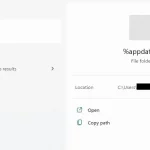Data networks are the backbone of modern technologies. The internet, electricity grids, cyber security measures-all of these rely on data networks for their operation. Data Networks are integral in virtually every industry and have grown to be a fundamental part of our everyday lives. This article discusses the different types of data networks and how to set them up for success.

Table of Contents
What is a Data Network?
A data network is a system of computers and devices that can communicate with each other over a shared infrastructure. The service that allows the computers and devices to communicate is provided by networking technologies, such as:
- Dialup (analog)
- FIOS (fiber optic)
- Cable (coaxial)
- Satellite
The most common type of data network is local area networks or LANs. These are networks that exist within an office building, campus, school, etc.
They are able to span long distances through the use of fiber optic cables but are limited in size due to the need for physical connectors at both ends.
A company may have multiple LANs if they have offices in different locations or if there are multiple buildings on one campus.
Different Types of Data Networks
The Internet is a type of data network. Data networks can come in many different forms, including:
- LANs – A LAN is defined as a local area network. It spans across an organization, usually spread out over one or more buildings. The service that provides the connection can be cable, DSL, fiber optic, etc.
- Wireless Networks – Wireless networks use radio frequencies to provide network access.
- WANs (wide area networks) – A WAN is defined as a wide area network and connects two or more LANs together. The service that provides the connection can be leased lines, VSAT satellite, T1/T3 lines, etc.
- MANs (metropolitan area networks – A MAN is a metropolitan area network and connects different LANs within a city or town. It is usually found in large cities where organizations are located close to each other for reasons of convenience or cost-effectiveness.
- WLANs (wireless local area networks) – A WLAN is a wireless local area network. This type of data network exists within an office building, but instead of using cables, it uses radio frequencies to transmit transmissions between devices.
Many other terms can be used to reference a type of data network, but these are the most common.
Setting up Data Networks
There are many factors that go into setting up the right data networks for your organization’s needs:
Price
You may have noticed that cost was not included in the list of factors. Depending on your industry, this may change your data network requirements. You don’t want to spend too much or too little money setting up a data network.
Speed
When it comes to speed, more is always better. It doesn’t matter if you are transferring files between branches or using the internet, faster speeds will improve performance and user satisfaction with any data network. A secure data network can prevent cyber-attacks and other security threats from impacting the organization’s operations.
Security
An unsecured data network can spell disaster for an organization so it is important to consider security when designing a solution that meets the needs of your company’s daily functions.
Scalability
Finally, you should also consider scalability-how easily can your data network be expanded, upgraded, and maintained. If you have a data network that is too small to support your company’s needs it will become obsolete over time.
If you go with the biggest and best solution available when your needs could have been met by something more cost-effective then you may find yourself in trouble down the road.





